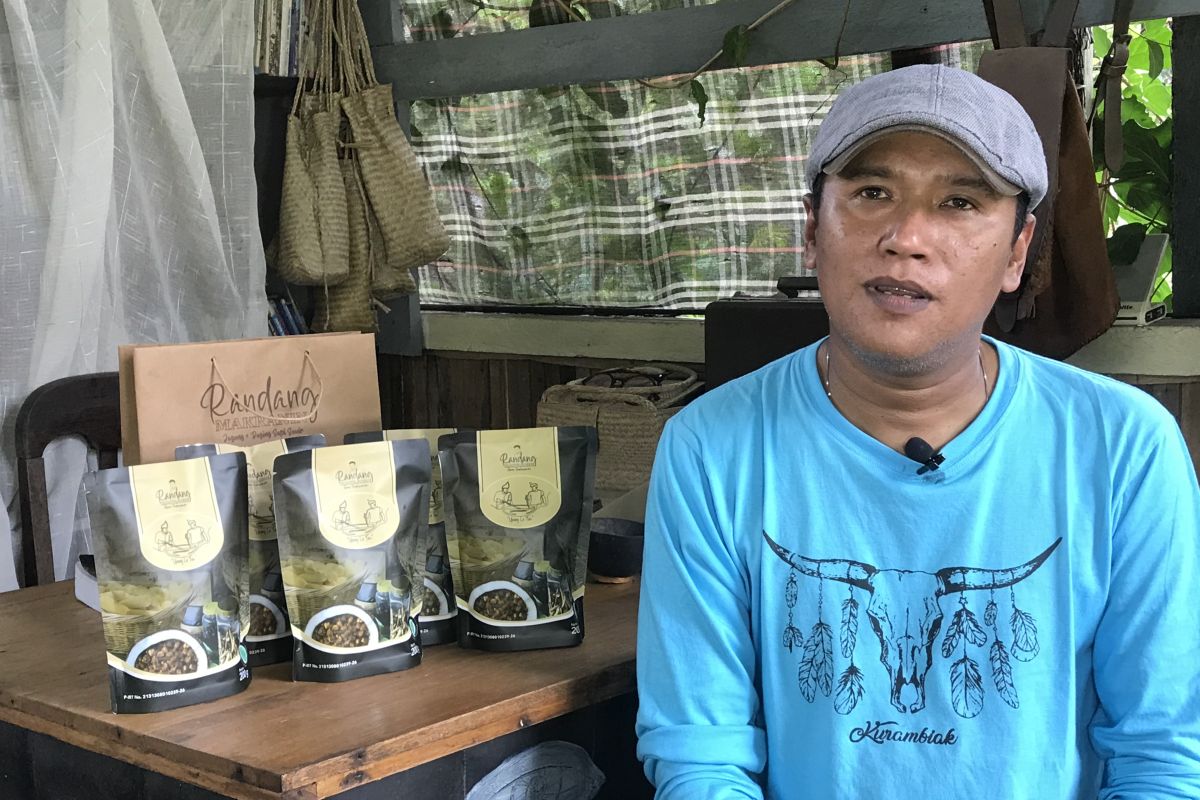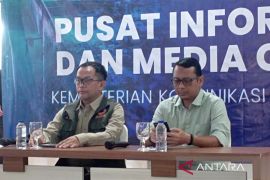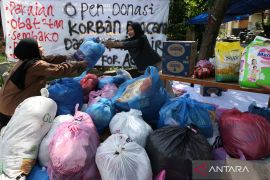Several types of rendang are available, but in general, rendang is a meat that is slowly boiled with coconut milk and mixed with spices, such as garlic, turmeric, ginger, lemongrass, galangal, and chili.
The cooking process that combines all the ingredients takes hours, so that the spices can permeate the meat perfectly.
As time progresses, the type of meat or protein source to make rendang has varied, starting from buffalo meat, chicken, egg, lokan (a type of mussel), and chicken lung. Currently, a new variant of rendang has emerged, which is corn rendang, developed by Oldi Putra, a man from Payakumbuh, Lima Puluh Kota District, West Sumatra.
Putra conceived the idea of corn rendang last year when he saw that his only daughter was keen to buy an overseas food item, which at that time was in high demand.
On observing this, Putra grew worried that Indonesian children were no longer interested in the iconic food of West Sumatra and this drove him to create a more contemporary style meal while still upholding the local culture.
"There is an intent to preserve the local culinary arts, so they are not lost, and then I thought through and finally (this idea) matched with corn. I wanted to make a new variant of rendang but not lose its local identity," Putra affirmed.
Initially, he sought information about how to make rendang from elders around his house. After trying various recipes, Putra finally zeroed in on the right formula to make corn rendang.
Although it has the same ingredients as meat rendang, Putra requires more coconuts for preparing corn rendang. If three coconuts are used for preparing one kilogram of meat rendang, then 10 coconuts are required for cooking corn rendang. To ensure that the taste is not boring, Putra also adds shredded meat, with the ratio of corn to meat being 1:1.
After having found the right taste, he sought responses from neighbors and young children. He feels that young children could not lie.
At first, people thought that the corn rendang was strange but after tasting it, Putra's recipe drew positive reviews.
To make it more interesting, Putra packed his corn rendang with the method of vacuum packaging, and named it "Rendang Jagung Makranin". Thus, each packaging has premium plastic quality.
"Nowadays, product packaging is a consideration, and even I have been fooled by attractive packaging. A premium (packaging) will give a luxury and clean impression, so people are more interested in buying the product," he stated.
At first, while producing corn rendang, Putra was helped by one employee and could produce it thrice a week, with 15 packages in total. Each package weighs 200 gr and is sold for Rp50 thousand or around US$3.5.
After more than a year, in March 2022, his production capacity increased to 30-45 packages.
Moreover, Putra claimed to be flooded with orders in April. To anticipate this, he makes batches of corn rendang every day, with a production capacity of 60 bags. From the 60 bags, Putra was able to reap profits of up to Rp800 thousand.
Preserving real flavor with traditional utensils
As civilization and technology have progressed, cooking rendang no longer had to use stoves and firewood. Cooking time can also be shorter if using gas fuel. Nevertheless, Putra chose to keep using traditional kitchen utensils to maintain an authentic rendang taste.
He opined that the taste of rendang cooked with traditional kitchen tools will be tastier and have a longer shelf life as compared to those prepared with modern appliances. In addition, he said, traditional flavors can refresh past memories of a mother's cooking.
"The most delicious food is a mother's cooking. I want to sell the memory of childhood. Based on that, I want the chemistry to be felt through traditional food," he remarked.
Not only traditional cooking utensils but there is also one more unique aspect seen in the 3x3-meter kitchen located behind Putra's house, a wooden coconut milk squeezer called kacik.
The traditional squeezer, shaped like a large clamp, is widely used in Payakumbuh. Coconut meat that is put in the container is then clamped in the kacik, and at end of the tool is a handle on which one must sit to extract the coconut milk juices.
After the coconut milk and other ingredients are ready, Putra can then start the process of making corn rendang that takes four hours. The first two hours are the process of stirring coconut milk with spices until the oil oozes out.
In the third hour, the shredded meat that has been boiled is put into the same crock of coconut milk and stirred again for one hour. Finally, corn is added and stirred for approximately 10 minutes.
"This is done and we can eat it, but the taste is (not what we are looking for) yet. It must be left for one night and be reheated for 15 minutes, and we then package it," he stated.
Expanding business through digital market
Since he first started his Rendang Jagung Makranin business, Putra has chosen the digital platform to market his product. Relying on a fairly large network of friends on Facebook and WhatsApp, the only corn rendang product in West Sumatra is now an option to be a souvenir.
Most customers are Minang people working outside West Sumatra who introduce corn rendang to various parts of the country. There are some who bring their products abroad to Korea and Japan.
In addition to supplying corn rendang to souvenir centers in Pekanbaru, Riau Province, Putra has regular customers, including the Minang people residing in Jakarta. Through his intermediaries, Rendang Jagung Makranin has reached various provinces in Indonesia.
He also uses an e-commerce platform to market his products as well as empowers college students to sell his corn rendang with a 10-percent fee benefit.
Since he admits to have not yet mastered the latest technology, he was keen to share his profits with students that help him to widen the target market. If his direct customers are only limited to the Minang people, then the customers whom the students reach out to will be more diverse.
Although his business is only a year old, Rendang Jagung Makranin managed to qualify to be one of the 45 micro, small, and medium enterprises (MSMEs) curated to participate in the Proud of Indonesian Products National Movement (Gernas BBI) in West Sumatra.
Putra is optimistic that through the Gernas BBI, his business would become more recognized in the community and become one of the souvenir mainstays of Minangkabau.
Related news: City of Randang branding to boost locals' income: Deputy mayor
Related news: Rendang should be loved, recognized by the world: First Lady
Editor: Rahmad Nasution
Copyright © ANTARA 2022












